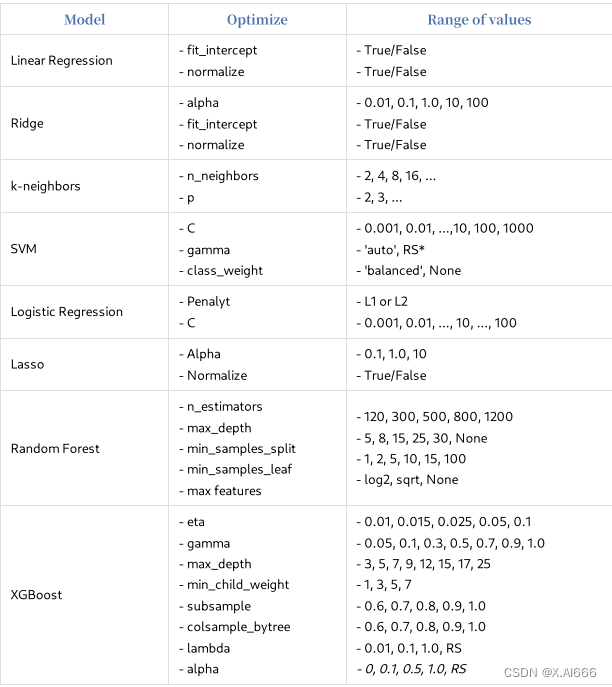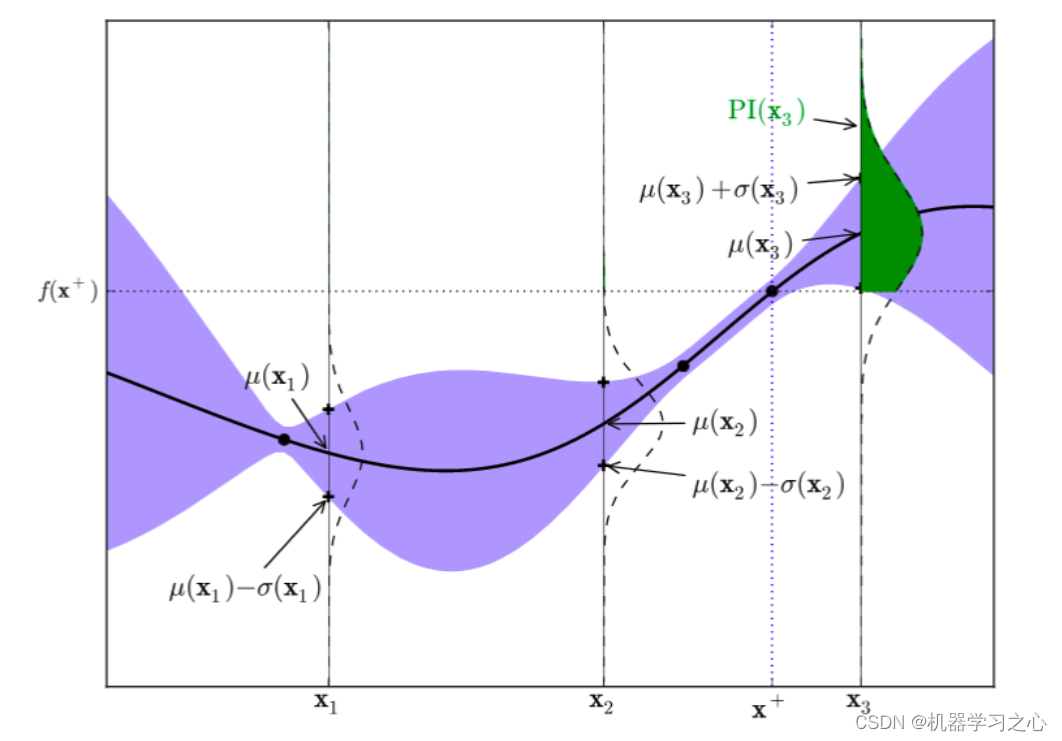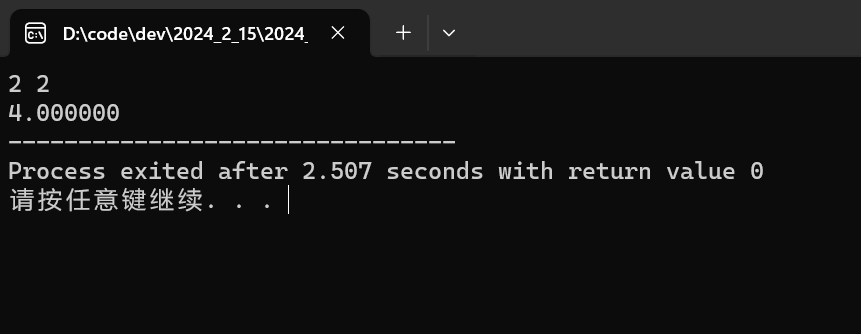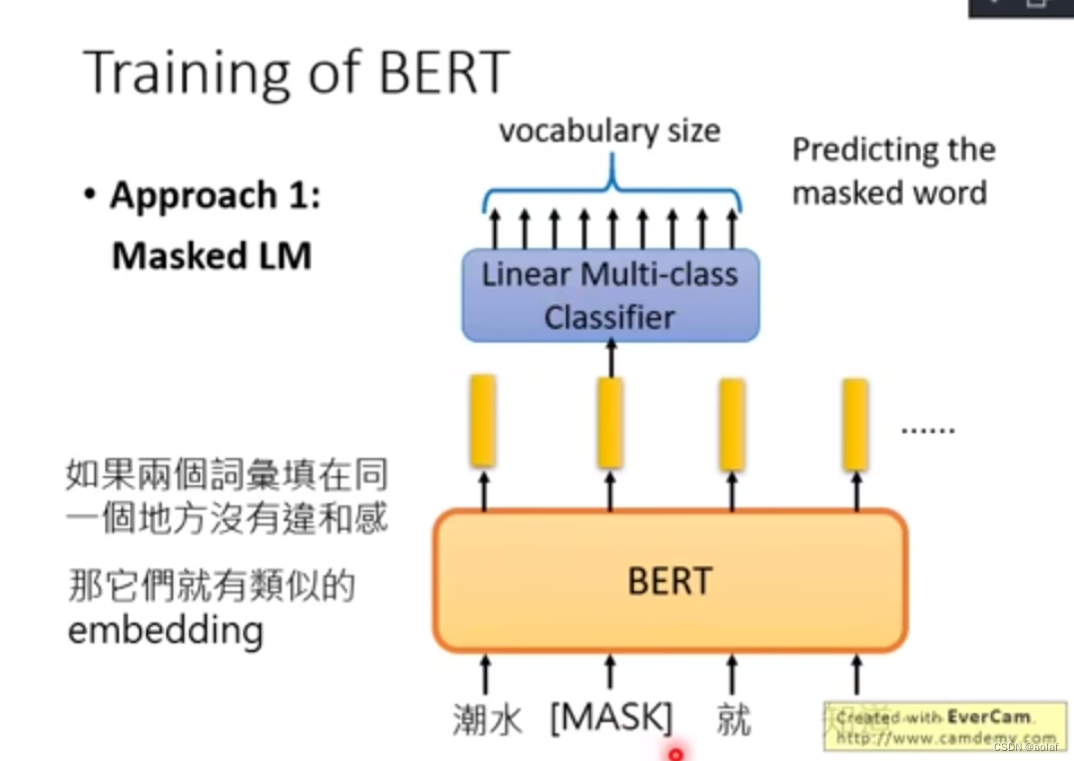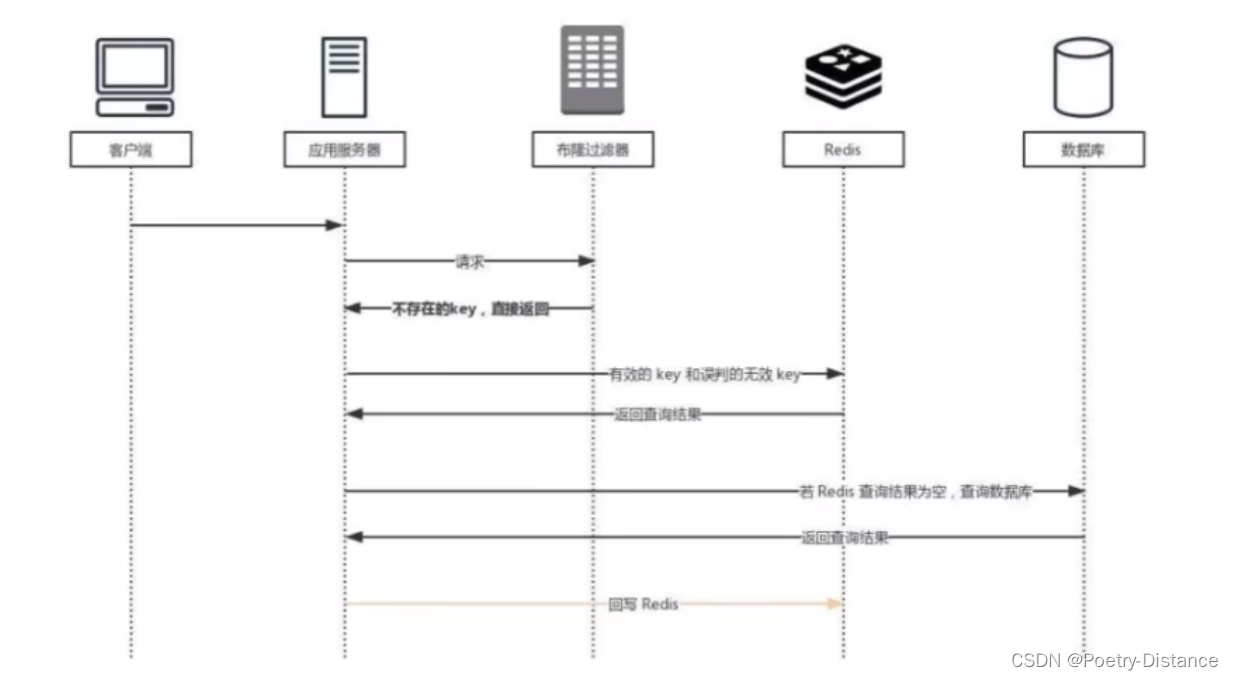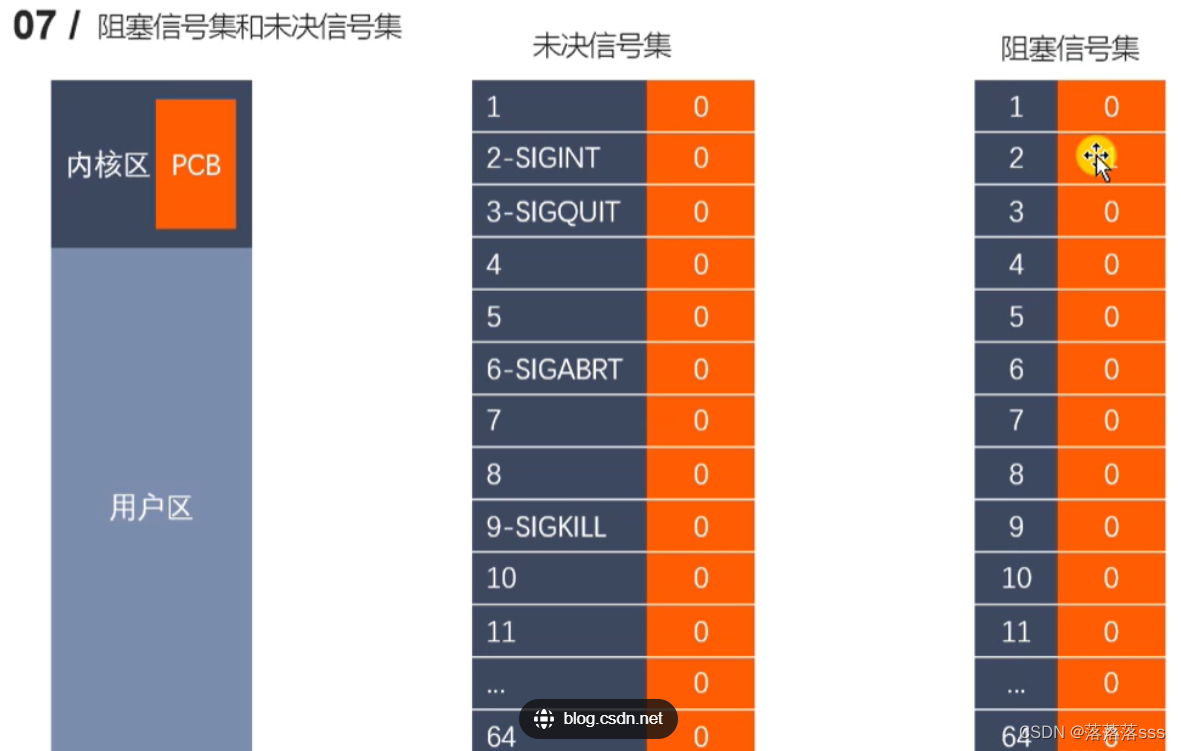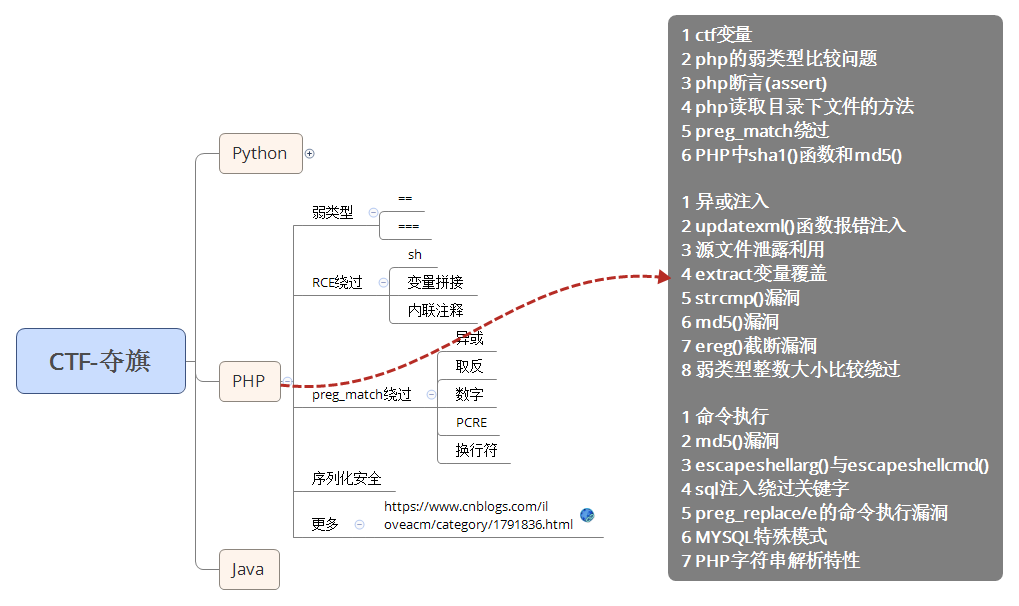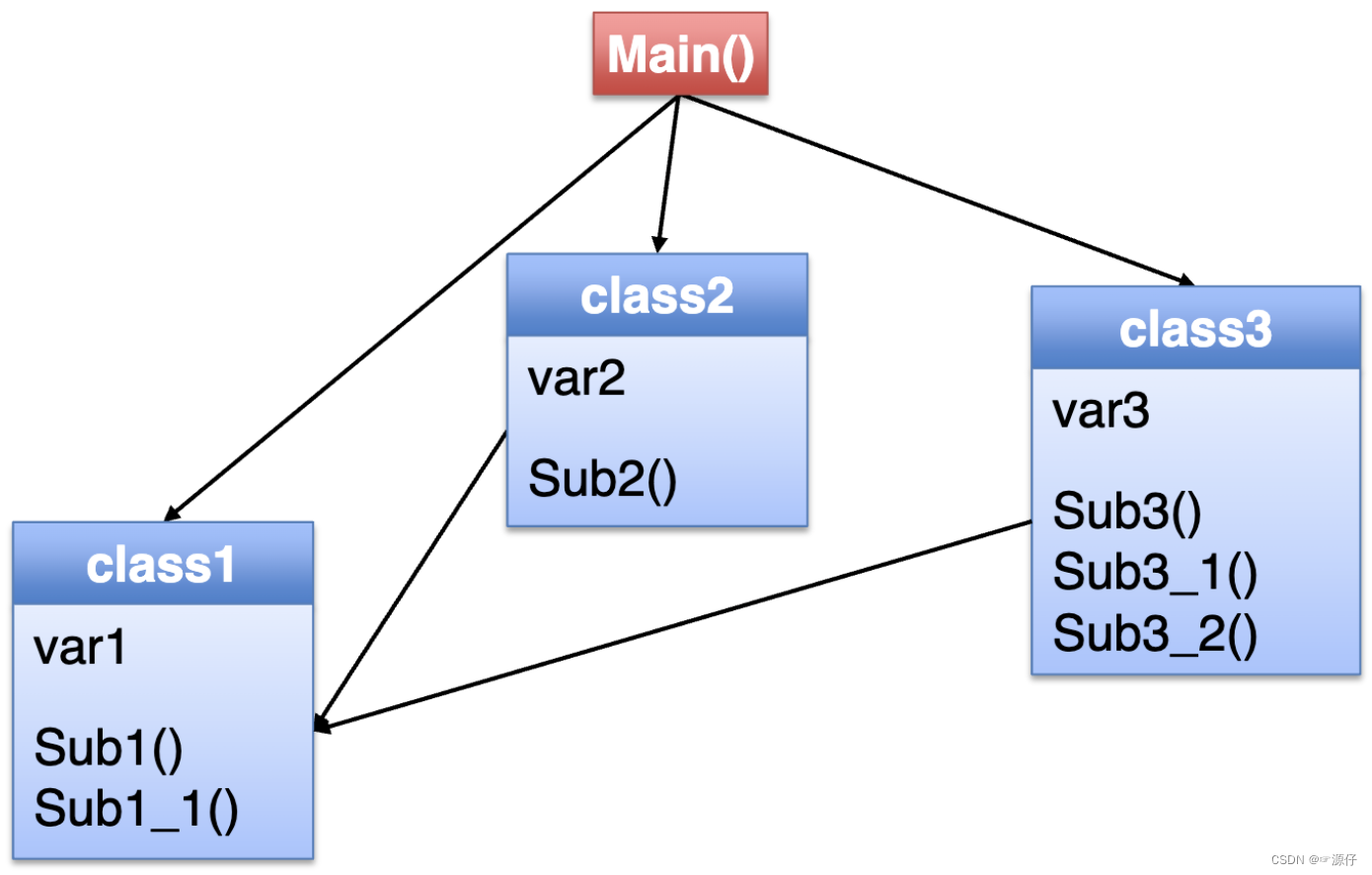这篇文章相当长,您可以添加至收藏夹,以便在后续有空时候悠闲地阅读。
有了优秀的模型,就有了优化超参数以获得最佳得分模型的难题。那么,什么是超参数优化呢?假设您的机器学习项⽬有⼀个简单的流程。有⼀个数据集,你直接应⽤⼀个模型,然后得到结 果。模型在这⾥的参数被称为超参数,即控制模型训练/拟合过程的参数。如果我们⽤ SGD 训练线性回归,模型的参数是斜率和偏差,超参数是学习率。你会发现我在本章和本书中交替使⽤这些术语。假设模型中有三个参数 a、b、c,所有这些参数都可以是 1 到 10 之间的整数。这些参数 的 "正确 "组合将为您提供最佳结果。因此,这就有点像⼀个装有三拨密码锁的⼿提箱。不过,三拨密码锁只有⼀个正确答案。⽽模型有很多正确答案。那么,如何找到最佳参数呢?⼀种⽅法是对所有组合进⾏评估,看哪种组合能提⾼指标。让我们看看如何做到这⼀点。
best_accuracy = 0
best_parameters = {"a": 0, "b": 0, "c": 0}
for a in range(1, 11):
for b in range(1, 11):
for c in range(1, 11):
model = MODEL(a, b, c)
model.fit(training_data)
preds = model.predict(validation_data)
accuracy = metrics.accuracy_score(targets, preds)
if accuracy > best_accuracy:
best_accuracy = accuracy
best_parameters["a"] = a
best_parameters["b"] = b
best_parameters["c"] = c
在上述代码中,我们从 1 到 10 对所有参数进⾏了拟合。因此,我们总共要对模型进⾏ 1000 次(10 x 10 x 10)拟合。这可能会很昂贵,因为模型的训练需要很⻓时间。不过,在这种情况下应 该没问题,但在现实世界中,并不是只有三个参数,每个参数也不是只有⼗个值。 ⼤多数模型参 数都是实数,不同参数的组合可以是⽆限的。
让我们看看 scikit-learn 的随机森林模型。
RandomForestClassifier(
n_estimators=100,
criterion='gini',
max_depth=None,
min_samples_split=2,
min_samples_leaf=1,
min_weight_fraction_leaf=0.0,
max_features='auto',
max_leaf_nodes=None,
min_impurity_decrease=0.0,
min_impurity_split=None,
bootstrap=True,
oob_score=False,
n_jobs=None,
random_state=None,
verbose=0,
warm_start=False,
class_weight=None,
ccp_alpha=0.0,
max_samples=None,
)
有 19 个参数,⽽所有这些参数的所有组合,以及它们可以承担的所有值,都将是⽆穷⽆尽的。通常情况下,我们没有⾜够的资源和时间来做这件事。因此,我们指定了⼀个参数⽹格。在这个⽹格上寻找最佳参数组合的搜索称为⽹格搜索。我们可以说,n_estimators 可以是 100、200、250、300、400、500;max_depth 可以是 1、2、5、7、11、15;criterion 可以是 gini 或 entropy。这些参数看起来并不多,但如果数据集过⼤,计算起来会耗费⼤量时间。我们可以像之前⼀样创建三个 for 循环,并在验证集上计算得分,这样就能实现⽹格搜索。还必须注意的是,如果要进⾏ k 折交叉验证,则需要更多的循环,这意味着需要更多的时间来找到完美的参数。因此,⽹格搜索并不流⾏。让我们以根据 ⼿机配置预测⼿机价格范围 数据集为例,看看它是如何实现的。
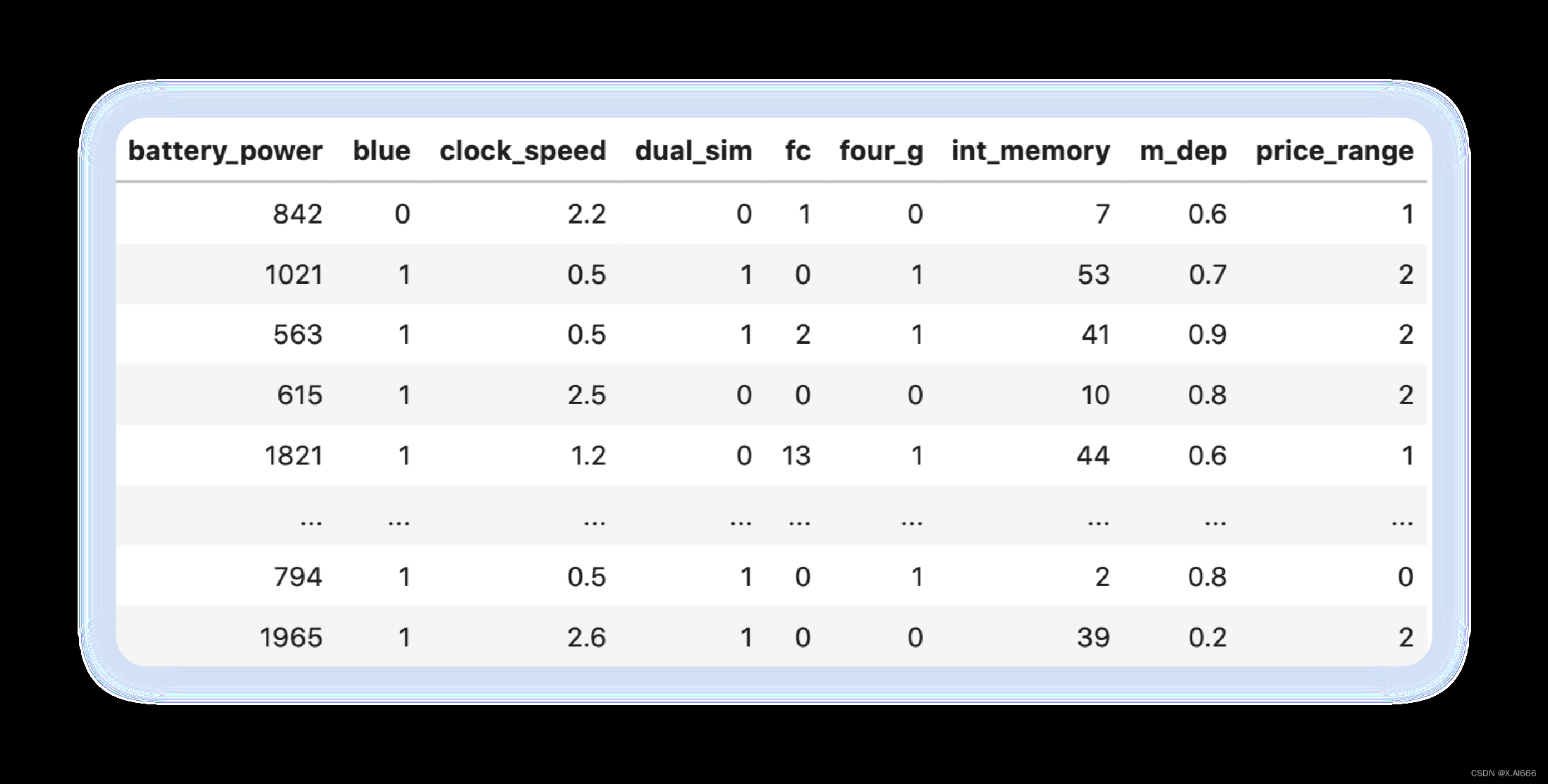
图 1 :⼿机配置预测⼿机价格范围数据集展⽰
训练集中只有 2000 个样本。我们可以轻松地使⽤分层 kfold 和准确率作为评估指标。我们将使⽤ 具有上述参数范围的随机森林模型,并在下⾯的⽰例中了解如何进⾏⽹格搜索。
# rf_grid_search.py
import numpy as np
import pandas as pd
from sklearn import ensemble
from sklearn import metrics
from sklearn import model_selection
if __name__ == "__main__":
df = pd.read_csv("./input/mobile_train.csv")
X = df.drop("price_range", axis=1).values
y = df.price_range.values
classifier = ensemble.RandomForestClassifier(n_jobs=-1)
param_grid = {
"n_estimators": [100, 200, 250, 300, 400, 500],
"max_depth": [1, 2, 5, 7, 11, 15],
"criterion": ["gini", "entropy"]
}
model = model_selection.GridSearchCV(
estimator=classifier,
param_grid=param_grid,
scoring="accuracy",
verbose=10,
n_jobs=1,
cv=5
)
model.fit(X, y)
print(f"Best score: {model.best_score_}")
print("Best parameters set:")
best_parameters = model.best_estimator_.get_params()
for param_name in sorted(param_grid.keys()):
print(f"\t{param_name}: {best_parameters[param_name]}")
这⾥打印了很多内容,让我们看看最后⼏⾏。
[ CV ] criterion = entropy , max_depth = 15 , n_estimators = 500 , score = 0.895 ,total = 1.0 s[ CV ] criterion = entropy , max_depth = 15 , n_estimators = 500 ...............[ CV ] criterion = entropy , max_depth = 15 , n_estimators = 500 , score = 0.890 ,total = 1.1 s[ CV ] criterion = entropy , max_depth = 15 , n_estimators = 500 ...............[ CV ] criterion = entropy , max_depth = 15 , n_estimators = 500 , score = 0.910 ,total = 1.1 s[ CV ] criterion = entropy , max_depth = 15 , n_estimators = 500 ...............[ CV ] criterion = entropy , max_depth = 15 , n_estimators = 500 , score = 0.880 ,total = 1.1 s[ CV ] criterion = entropy , max_depth = 15 , n_estimators = 500 ...............[ CV ] criterion = entropy , max_depth = 15 , n_estimators = 500 , score = 0.870 , total = 1.1 s[ Parallel ( n_jobs = 1 )]: Done 360 out of 360 | elapsed : 3.7 min finishedBest score : 0.889Best parameters set :criterion : 'entropy'max_depth : 15n_estimators : 500
最后,我们可以看到,5折交叉检验最佳得分是 0.889,我们的⽹格搜索得到了最佳参数。我们可 以使⽤的下⼀个最佳⽅法是 随机搜索 。在随机搜索中,我们随机选择⼀个参数组合,然后计算交 叉验证得分。这⾥消耗的时间⽐⽹格搜索少,因为我们不对所有不同的参数组合进⾏评估。我们 选择要对模型进⾏多少次评估,这就决定了搜索所需的时间。代码与上⾯的差别不⼤。除了GridSearchCV 外,我们使⽤ RandomizedSearchCV。
if __name__ == "__main__":
classifier = ensemble.RandomForestClassifier(n_jobs=-1)
param_grid = {
"n_estimators": np.arange(100, 1500, 100),
"max_depth": np.arange(1, 31),
"criterion": ["gini", "entropy"]
}
model = model_selection.RandomizedSearchCV(
estimator=classifier,
param_distributions=param_grid,
n_iter=20,
scoring="accuracy",
verbose=10,
n_jobs=1,
cv=5
)
model.fit(X, y)
print(f"Best score: {model.best_score_}")
print("Best parameters set:")
best_parameters = model.best_estimator_.get_params()
for param_name in sorted(param_grid.keys()):
print(f"\t{param_name}: {best_parameters[param_name]}")我们更改了随机搜索的参数⽹格,结果似乎有了些许改进。
Best score : 0.8905Best parameters set :criterion : entropymax_depth : 25n_estimators : 300
如果迭代次数较少,随机搜索⽐⽹格搜索更快。使⽤这两种⽅法,你可以为各种模型找到最优参 数,只要它们有拟合和预测功能,这也是 scikit-learn 的标准。有时,你可能想使⽤管道。例如假设我们正在处理⼀个多类分类问题。在这个问题中,训练数据由两列⽂本组成,你需要建⽴⼀个模型来预测类别。让我们假设你选择的管道是⾸先以半监督的⽅式应⽤ tf-idf,然后使⽤SVD 和SVM 分类器。现在的问题是,我们必须选择 SVD 的成分,还需要调整 SVM 的参数。下⾯的代段展⽰了如何做到这⼀点。
import numpy as np
import pandas as pd
from sklearn import metrics
from sklearn import model_selection
from sklearn import pipeline
from sklearn.decomposition import TruncatedSVD
from sklearn.feature_extraction.text import TfidfVectorizer
from sklearn.preprocessing import StandardScaler
from sklearn.svm import SVC
def quadratic_weighted_kappa(y_true, y_pred):
return metrics.cohen_kappa_score(y_true, y_pred, weights="quadratic")
if __name__ == '__main__':
train = pd.read_csv('./input/train.csv')
idx = test.id.values.astype(int)
train = train.drop('id', axis=1)
test = test.drop('id', axis=1)
y = train.relevance.values
traindata = list(train.apply(lambda x:'%s %s' % (x['text1'], x['text2']), axis=1))
testdata = list(test.apply(lambda x:'%s %s' % (x['text1'], x['text2']), axis=1))
tfv = TfidfVectorizer(
min_df=3,
max_features=None,
strip_accents='unicode',
analyzer='word',
token_pattern=r'\w{1,}',
ngram_range=(1, 3),
use_idf=1,
smooth_idf=1,
sublinear_tf=1,
stop_words='english'
)
tfv.fit(traindata)
X = tfv.transform(traindata)
X_test = tfv.transform(testdata)
svd = TruncatedSVD()
scl = StandardScaler()
svm_model = SVC()
clf = pipeline.Pipeline([
('svd', svd),
('scl', scl),
('svm', svm_model)
])
param_grid = {
'svd__n_components': [200, 300],
'svm__C': [10, 12]
}
kappa_scorer = metrics.make_scorer(
quadratic_weighted_kappa,
greater_is_better=True
)
model = model_selection.GridSearchCV(
estimator=clf,
param_grid=param_grid,
scoring=kappa_scorer,
verbose=10,
n_jobs=-1,
refit=True,
cv=5
)
model.fit(X, y)
print("Best score: %0.3f" % model.best_score_)
print("Best parameters set:")
best_parameters = model.best_estimator_.get_params()
for param_name in sorted(param_grid.keys()):
print("\t%s: %r" % (param_name, best_parameters[param_name]))
best_model = model.best_estimator_
best_model.fit(X, y)
preds = best_model.predict(X_test)
这⾥显⽰的管道包括 SVD(奇异值分解)、标准缩放和 SVM(⽀持向量机)模型。请注意,由于没有训练数据,您⽆法按原样运⾏上述代码。当我们进⼊⾼级超参数优化技术时,我们可以使⽤ 不同类型的 最⼩化算法 来研究函数的最⼩化。这可以通过使⽤多种最⼩化函数来实现,如下坡单 纯形算法、内尔德-梅德优化算法、使⽤⻉叶斯技术和⾼斯过程寻找最优参数或使⽤遗传算法。 我将在 "集合与堆叠(ensembling and stacking) "⼀章中详细介绍下坡单纯形算法和 NelderMead 算法的应⽤。⾸先,让我们看看⾼斯过程如何⽤于超参数优化。这类算法需要⼀个可以优化的函数。⼤多数情况下,都是最⼩化这个函数,就像我们最⼩化损失⼀样。因此,⽐⽅说,你想找到最佳参数以获得最佳准确度,显然,准确度越⾼越好。现在,我们不能最⼩化精确度,但我们可以将精确度乘以-1。这样,我们是在最⼩化精确度的负值,但事实上,我们是在最⼤化精确度。 在⾼斯过程中使⽤⻉叶斯优化,可以使⽤ scikit-optimize (skopt) 库中的 gp_minimize 函数。让我们看看如何使⽤该函数调整随机森林模型的参数。
# rf_gp_minimize.py
import numpy as np
import pandas as pd
from functools import partial
from sklearn import ensemble
from sklearn import metrics
from sklearn import model_selection
from skopt import gp_minimize
from skopt import space
def optimize(params, param_names, x, y):
params = dict(zip(param_names, params))
model = ensemble.RandomForestClassifier(**params)
kf = model_selection.StratifiedKFold(n_splits=5)
accuracies = []
for idx in kf.split(X=x, y=y):
train_idx, test_idx = idx[0], idx[1]
xtrain = x[train_idx]
ytrain = y[train_idx]
xtest = x[test_idx]
ytest = y[test_idx]
model.fit(xtrain, ytrain)
preds = model.predict(xtest)
fold_accuracy = metrics.accuracy_score(ytest, preds)
accuracies.append(fold_accuracy)
return -1 * np.mean(accuracies)
if __name__ == "__main__":
df = pd.read_csv("./input/mobile_train.csv")
X = df.drop("price_range", axis=1).values
y = df.price_range.values
param_space = [
space.Integer(3, 15, name="max_depth"),
space.Integer(100, 1500, name="n_estimators"),
space.Categorical(["gini", "entropy"], name="criterion"),
space.Real(0.01, 1, prior="uniform", name="max_features")
]
param_names = [
"max_depth",
"n_estimators",
"criterion",
"max_features"
]
optimization_function = partial(
optimize,
param_names=param_names,
x=X,
y=y
)
result = gp_minimize(
optimization_function,
dimensions=param_space,
n_calls=15,
n_random_starts=10,
verbose=10
)
best_params = dict(
zip(
param_names,
result.x
)
)
print(best_params)这同样会产⽣⼤量输出,最后⼀部分如下所⽰。
Iteration No : 14 started . Searching for the next optimal point .Iteration No : 14 ended . Search finished for the next optimal point .Time taken : 4.7793Function value obtained : - 0.9075Current minimum : - 0.9075Iteration No : 15 started . Searching for the next optimal point .Iteration No : 15 ended . Search finished for the next optimal point .Time taken : 49.4186Function value obtained : - 0.9075Current minimum : - 0.9075{ 'max_depth' : 12 , 'n_estimators' : 100 , 'criterion' : 'entropy' ,'max_features' : 1.0 }
看来我们已经成功突破了 0.90的准确率。这真是太神奇了!
我们还可以通过以下代码段查看(绘制)我们是如何实现收敛的。
from skopt . plots import plot_convergenceplot_convergence ( result )
收敛图如图 2 所⽰。
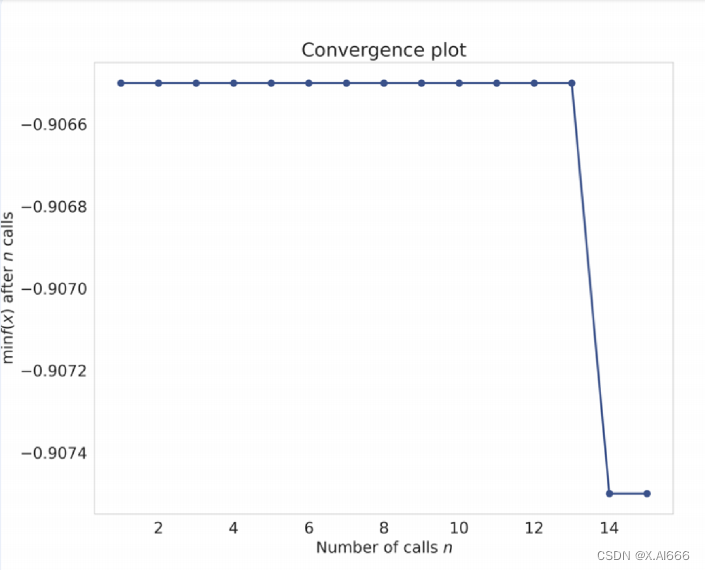
图 2:随机森林参数优化的收敛图
Scikit- optimize 就是这样⼀个库。 hyperopt 使⽤树状结构帕岑估计器(TPE)来找到最优参数。请看下⾯的代码⽚段,我在使⽤ hyperopt 时对之前的代码做了最⼩的改动。
import numpy as np
import pandas as pd
from functools import partial
from sklearn import ensemble
from sklearn import metrics
from sklearn import model_selection
from hyperopt import hp, fmin, tpe, Trials
from hyperopt.pyll.base import scope
def optimize(params, x, y):
model = ensemble.RandomForestClassifier(**params)
kf = model_selection.StratifiedKFold(n_splits=5)
accuracies = []
for idx in kf.split(X=x, y=y):
train_idx, test_idx = idx[0], idx[1]
xtrain = x[train_idx]
ytrain = y[train_idx]
xtest = x[test_idx]
ytest = y[test_idx]
model.fit(xtrain, ytrain)
preds = model.predict(xtest)
fold_accuracy = metrics.accuracy_score(ytest, preds)
accuracies.append(fold_accuracy)
return -1 * np.mean(accuracies)
if __name__ == "__main__":
df = pd.read_csv("./input/mobile_train.csv")
X = df.drop("price_range", axis=1).values
y = df.price_range.values
param_space = {
"max_depth": scope.int(hp.quniform("max_depth", 1, 15, 1)),
"n_estimators": scope.int(hp.quniform("n_estimators", 100, 1500, 1)),
"criterion": hp.choice("criterion", ["gini", "entropy"]),
"max_features": hp.uniform("max_features", 0, 1)
}
optimization_function = partial(
optimize,
x=X,
y=y
)
trials = Trials()
hopt = fmin(
fn=optimization_function,
space=param_space,
algo=tpe.suggest,
max_evals=15,
trials=trials
)
print(hopt)
正如你所看到的,这与之前的代码并⽆太⼤区别。你必须以不同的格式定义参数空间,还需要改
变实际优化部分,⽤ hyperopt 代替 gp_minimize。结果相当不错!
❯ python rf_hyperopt . py100 %| ██████████████████ | 15 / 15 [ 0 4 : 38 < 0 0 : 0 0 , 18.57 s / trial , best loss : -0.9095000000000001 ]{ 'criterion' : 1 , 'max_depth' : 11.0 , 'max_features' : 0.821163568049807 ,'n_estimators' : 806.0 }
我们得到了⽐以前更好的准确度和⼀组可以使⽤的参数。请注意,最终结果中的标准是 1。这意味着选择了 1,即熵。 上述调整超参数的⽅法是最常⻅的,⼏乎适⽤于所有模型:线性回归、逻辑回归、基于树的⽅法、梯度提升模型(如 xgboost、lightgbm),甚⾄神经⽹络!
虽然这些⽅法已经存在,但学习时必须从⼿动调整超参数开始,即⼿⼯调整。⼿动调整可以帮助 你学习基础知识,例如,在梯度提升中,当你增加深度时,你应该降低学习率。如果使⽤⾃动⼯ 具,就⽆法学习到这⼀点。请参考下表,了解应如何调整。RS* 表⽰随机搜索应该更好.
⼀旦你能更好地⼿动调整参数,你甚⾄可能不需要任何⾃动超参数调整。创建⼤型模型或引⼊⼤ 量特征时,也容易造成训练数据的过度拟合。为避免过度拟合,需要在训练数据特征中引⼊噪声 或对代价函数进⾏惩罚。这种惩罚称为 正则化 ,有助于泛化模型。在线性模型中,最常⻅的正则 化类型是 L1 和 L2。L1 也称为 Lasso 回归,L2 称为 Ridge 回归。说到神经⽹络,我们会使⽤ dropout、添加增强、噪声等⽅法对模型进⾏正则化。利⽤超参数优化,还可以找到正确的惩罚⽅法。
